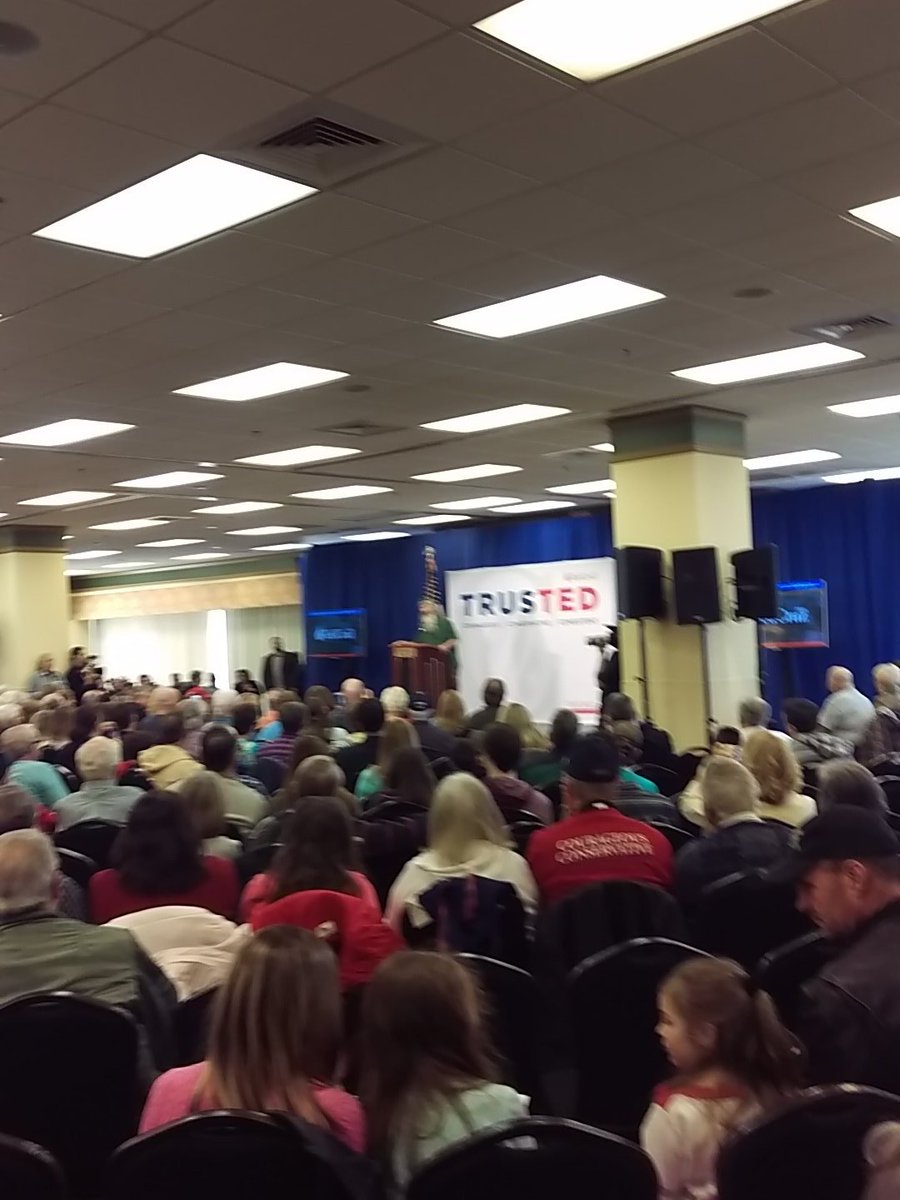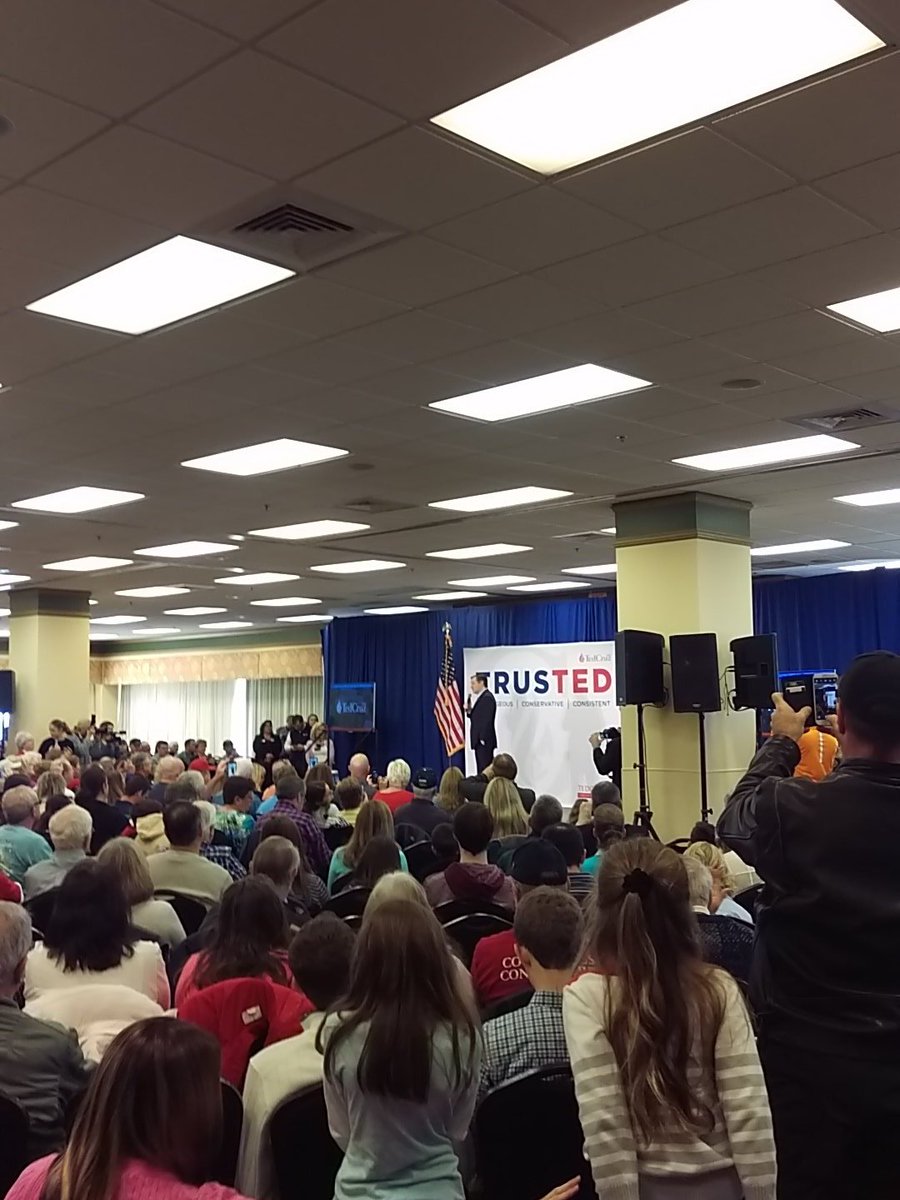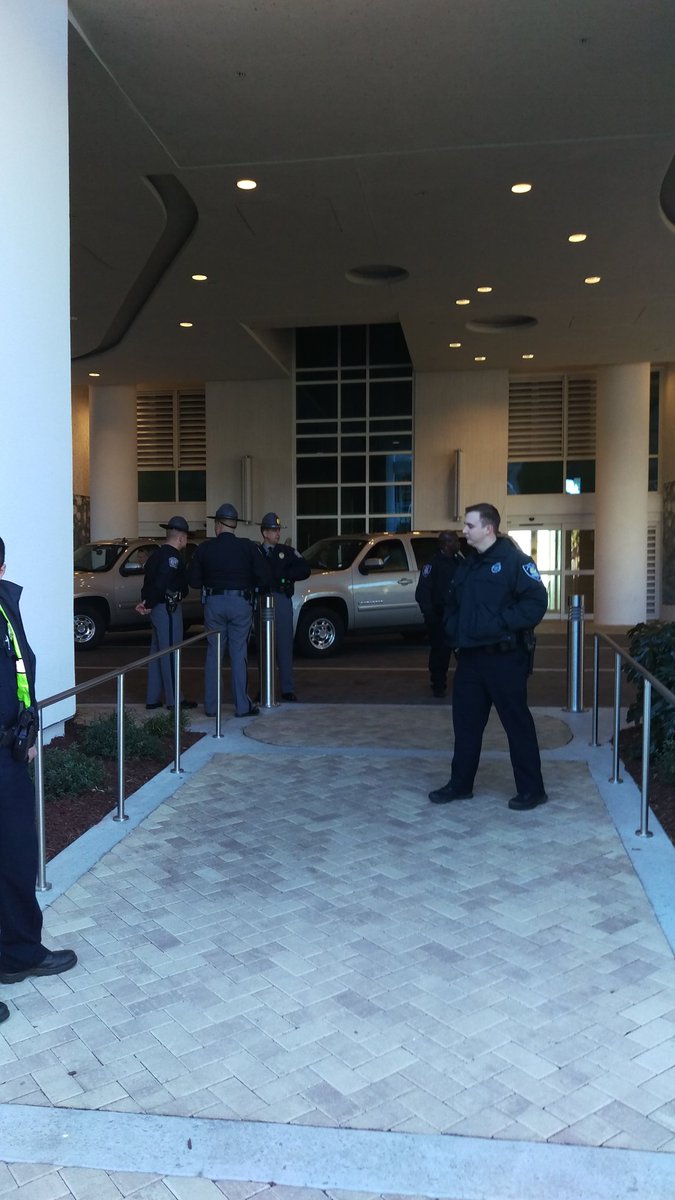As the nominating contests moved south (and west) from New Hampshire, your intrepid blogger followed the candidates. Here’s Part I of what I saw during my four-day whirlwind campaign tour of the Palmetto state.
We flew into Charlotte early Wednesday, and after the obligatory (for a presidency scholar) stops at the birthplaces of James Polk and (possibly – it is in dispute) Andrew Jackson, I headed to Myrtle Beach where I hoped to pull off the ultimate: hitting four candidate stops in one day. Along the way, however, I managed to take a wrong turn and, in the process of turning around, drove into a ditch. Just as I thought my South Carolina trip was destined to last no longer than Scott Walker’s campaign, three pick up trucks pulled up, and in 15 minutes three locals and I had lifted the rental car out of the ditch with nary a scratch. That was my introduction to South Carolinian hospitality, but not my last experience with it – people have been incredibly thoughtful and kind throughout the trip, particularly when I accosted them at polling places.
On Thursday we took the lay of the land, talking to locals about the campaign. It soon became apparent that most of the locals here were more interested in the Republican race, and that there were a considerable number of undecided voters. However, more than one person told me they were deciding between Trump and Sanders. When I asked why, they all said some version of it is time to clean up Washington, get new people in, etc. The other overriding sentiment, however, was that most people could not wait for the campaign to end. One older gentleman told me he had received 75 phone calls in the last week from political campaigns, and had taken to simply hanging up on them. Others complained about the nasty tones of the campaign ads. One man told me, “They don’t give you any reason to vote for them. They just attack each other.” Meanwhile, you couldn’t turn on the television without seeing wall-to-wall campaign ads. Among the more indelible images was those of Marco Rubio and South Carolina Governor Nikki Haley, who seemed joined at the hip at every appearance.
On Friday we awoke early to attend a Ted Cruz rally, which fortunately featured Duck Dynasty’s Phil Robertson to warm up the audience. I couldn’t possibly do justice to Robertson’s speech, except to say it featured a lot of talk about sinners, the Founding Fathers, the Ten Commandments, STD’s (I kid you not) and courthouses. Robertson bragged that he didn’t own a cellphone or a computer. When asked how he operates, he noted, “I’m filthy rich!”

After Phil left, Cruz was introduced by his wife Heidi, who spent a few minutes gushing about why she fell in love with Ted, and he took the stage to huge applause from a packed house (I estimated 500 people.) In contrast to his rallies in New Hampshire, in which the audience seemed more subdued, it was clear these were Cruz’ people and he fed off their energy. The closest experience I have had was attending a Sanders’ rally, which also featured the true believers who came to hear the anointed one preach the gospel. After reciprocating Heidi’s love chat, Cruz used Antonin Scalia’s death to point to the importance of electing a true conservative to the Presidency. Much of what he said reprised his standard stump speech from NH, such as his promise to bring French fries back to school lunches, but he added a new wrinkle especially for South Carolina by referencing William Barret Travis, a South Carolinian who commanded the Texas army at the battle of the Alamo. Barret, and the Alamo, served as a means of connecting Cruz’ home state of Texas with South Carolina – two states, Cruz explained, that had a lot in common. He then recounted Travis’ famous “line in the sand” speech, and he said South Carolinian voters are at a similar crossroads.

Cruz also took a shot at his Republican rivals for advocating for women to fight in the military – “Can you believe that?” he asked incredulously – and at Trump for saying he would remain “neutral” in the fight between Palestine and Israel. Cruz promised to restore the might of the U.S. military, repeal every word of Obamacare, institute tax reform that would lead to the abolition of the IRS, and utterly destroy ISIS, the face of radical Islamic terrorism. And, in a phrase meant to remind voters of Trump, Cruz promised that if he’s elected “We’ll be winning so much that we’ll be tired of winning!” He concluded with another shot at Trump, saying, “It’s easy to say ‘I’ll make America great again.’ But that requires you to understand what made American great in the first place!” Cruz urged the audience to get out and vote, and to tell two family members or friends to do so as well.
When Cruz ended, we dashed out of the room, hoping to make a quick stop at our hotel before heading over to the Donald Trump rally. But as we pulled up to the hotel doors, security met us and asked us to wait – because The Donald was coming out to go to his rally! Apparently he had slipped into our hotel the previous night after doing the CNN Townhall and, while I was drinking scotch, the Secret Service was trying to decide if I might be a radical Islamic terrorist. After waiting 35 minutes, we decided to go right to the Trump rally. As you might expect, it was a spectacle all by itself. Details to come.


